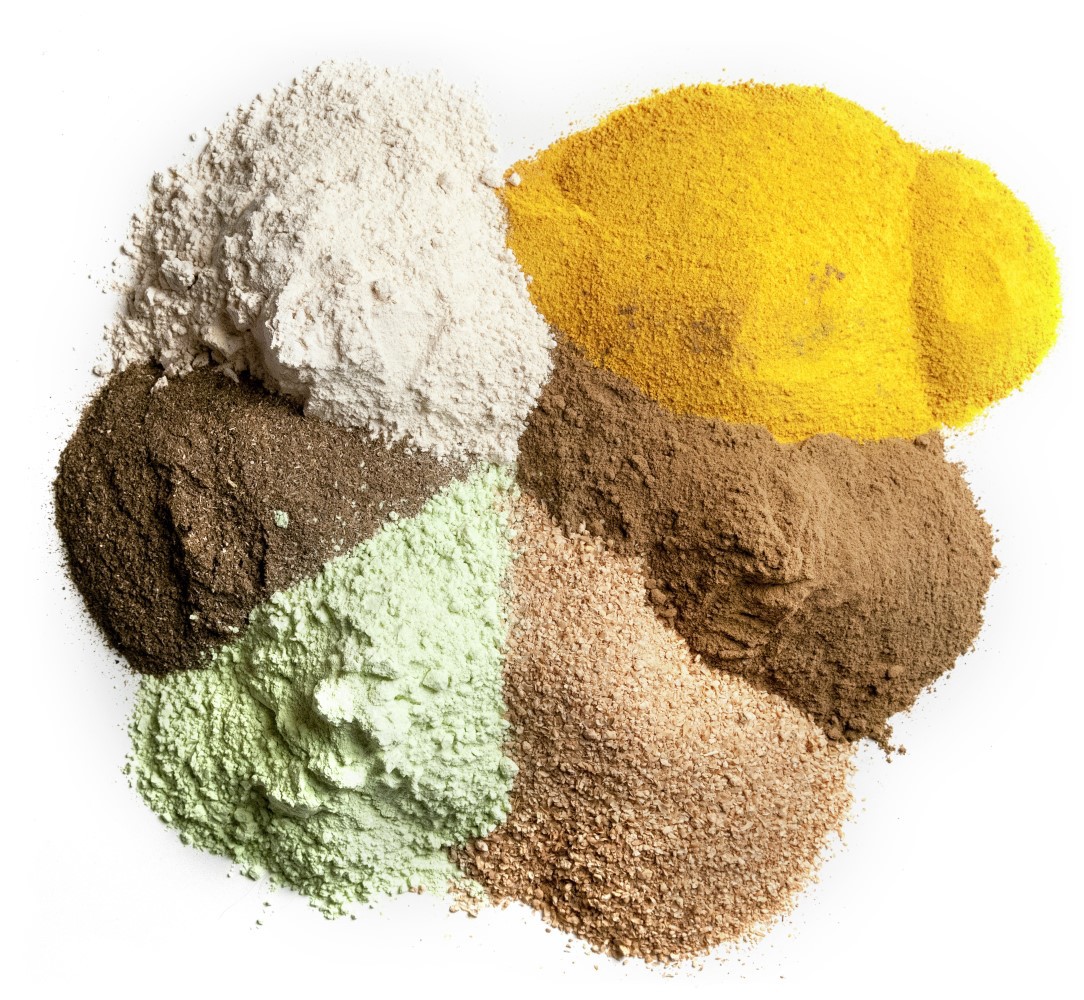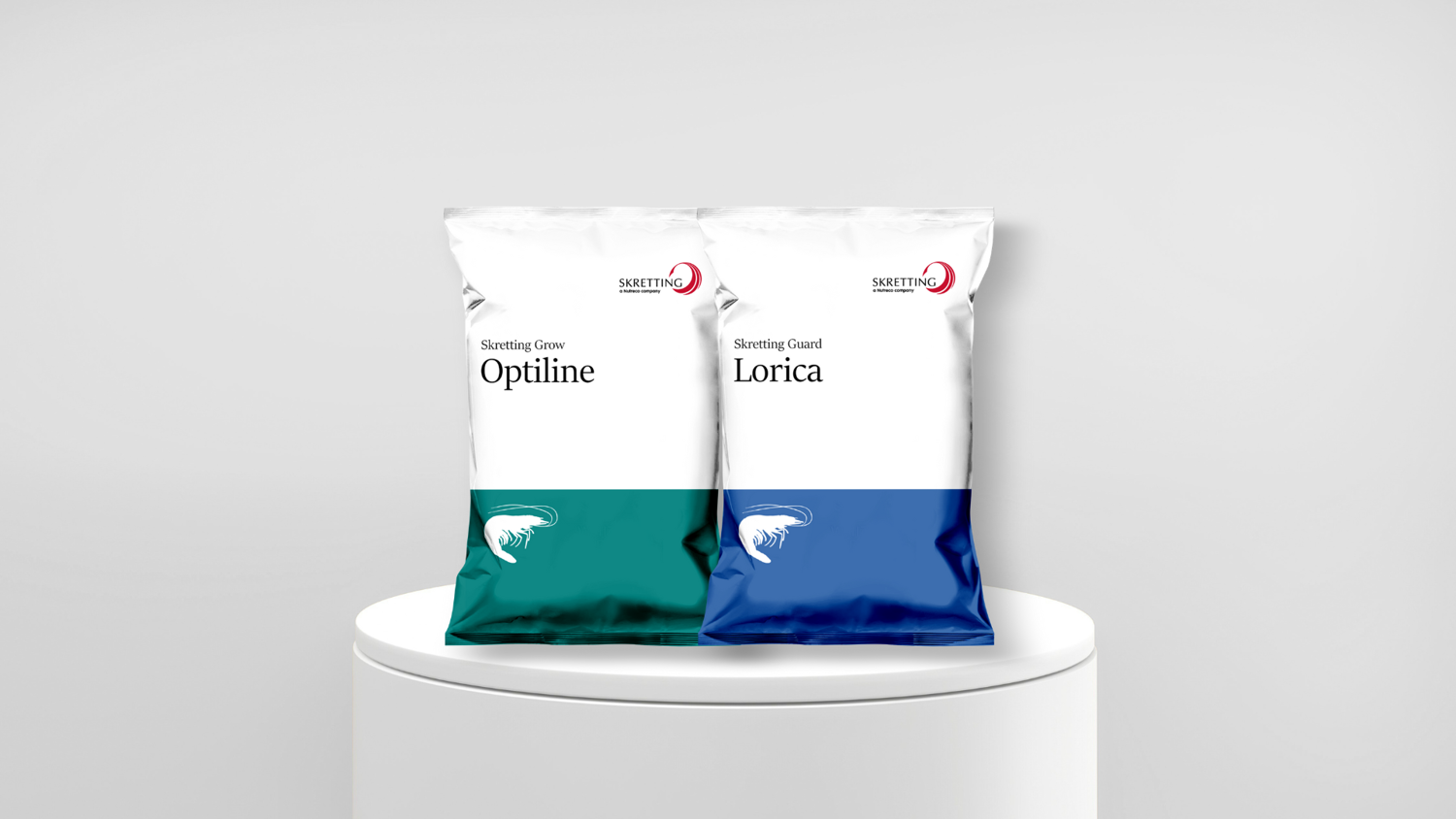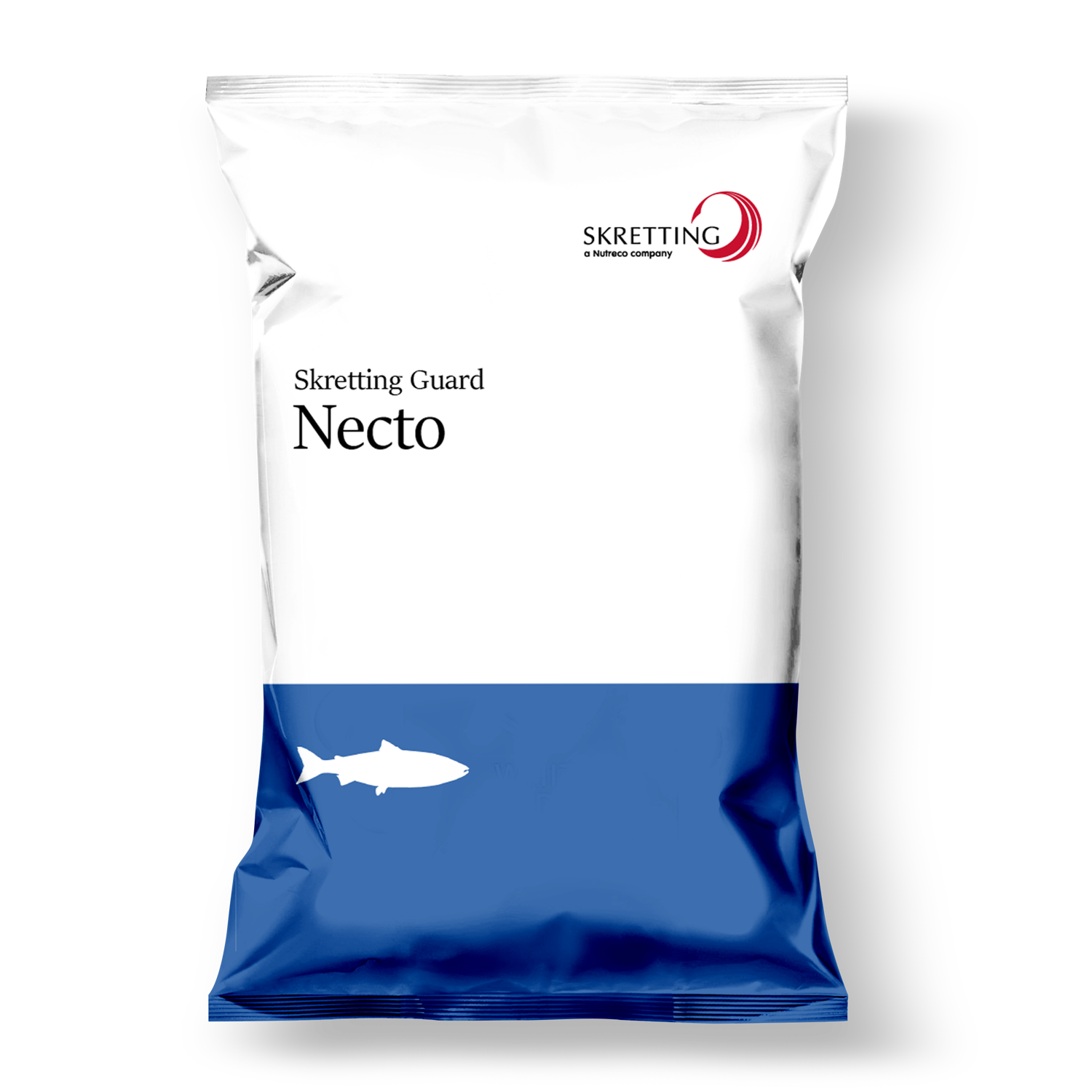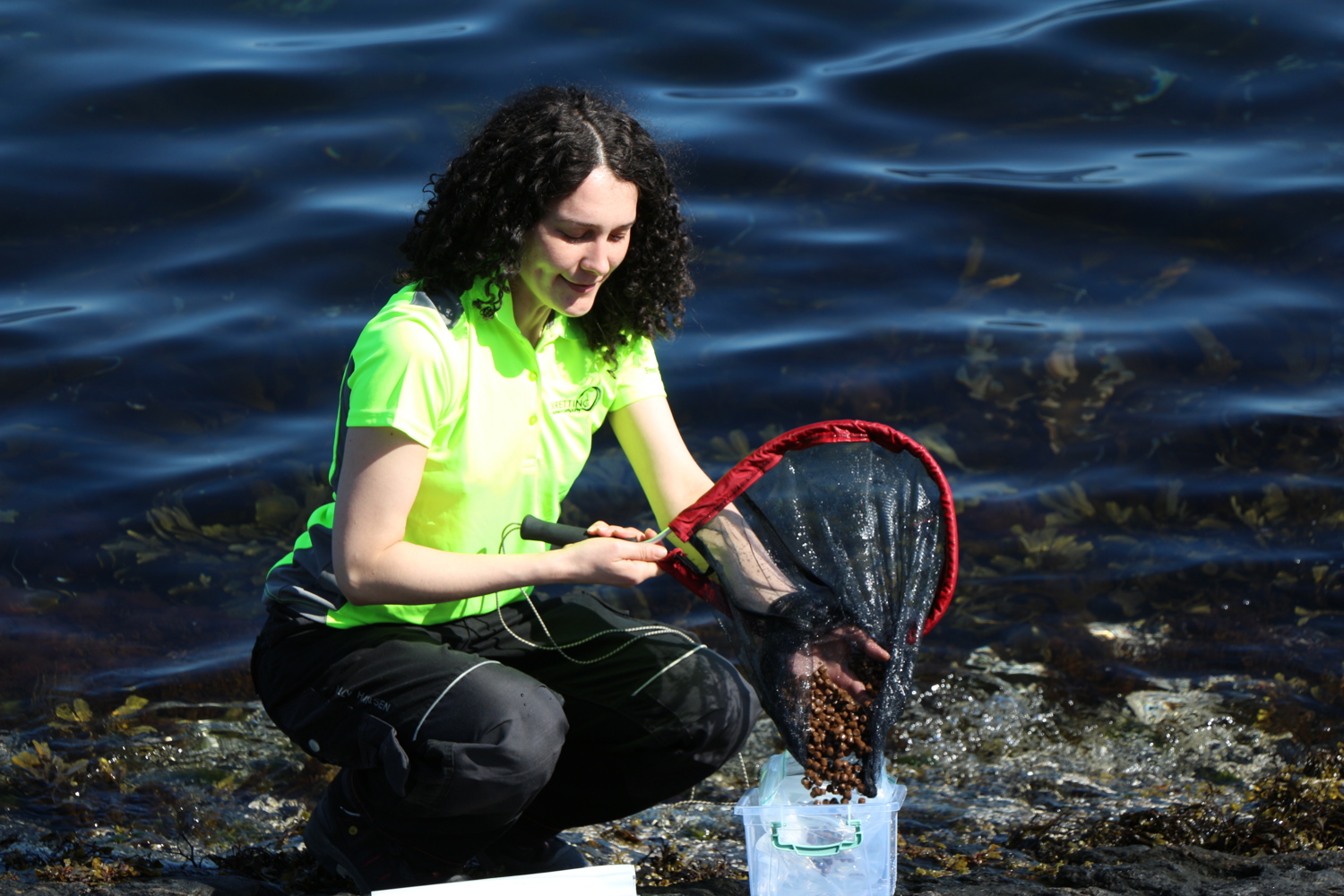Skretting are proud leaders in aquafeed technology, and are first to market with salmon feed formulations made completely fishmeal-free while delivering equal performance in terms of fish growth and health.
Fishmeal-free breakthrough for Skretting
Fishmeal availability will not limit future growth for the salmon industry

This breakthrough has been made possible through progressive and extensive research and is backed up by detailed evidence from Skretting Aquaculture Research Centre (ARC).
Significant solutions
The extended ramifications for this breakthrough are significant: it means Skretting can be increasingly flexible with raw material inclusions, enabling the available responsibly sourced fishmeal resource to go much further than in the past, and thereby increasing the sustainability credentials of salmon production globally.
Sustainability a key focus
José Villalon is Corporate Sustainability Director for Nutreco, Skretting’s parent company. As former Vice President and Managing Director of WWF’s aquaculture programme and member of the Supervisory Board of the Aquaculture Stewardship Council (ASC), Villalon is well versed in the increasingly strict requirements demanded of aquaculture on a global scale, and the implications of breakthroughs such as this.
“Feeding the future is Nutreco’s mission, and this breakthrough in raw material flexibility gives us the ability to provide a significant contribution to feeding the global population that is expected to reach 9 billion by 2050,” says Villalon.
Raw material freedom
Skretting ARC, based in Stavanger, Norway, has devoted significant resources over the past 25 years to exploring the potential for alternative raw materials to replace traditional feed components while ensuring optimum fish growth and health.
Progressive research in the early 2000s led to the identification of key micronutrients in the fishmeal profile that are essential to fish. The resultant MicroBalance® concept has allowed Skretting to be increasingly flexible with feed formulations. The latest research is the culmination of decades of investigation, and sees the final piece of the puzzle fall into place: the MicroBalance circle for fishmeal in salmonid grower feed is now complete.
“Through our research, we have detailed evidence proving salmonids can be fed with feeds that are devoid of fishmeal. This is very important knowledge that we will utilise to give us even more flexibility with regards to the composition of our commercial feeds,” says Dr Leo Nankervis, Team Leader Salmonid Nutrition at Skretting ARC.
“There is a finite amount of fishmeal available in the market. Therefore, in order for aquaculture to expand to offer a genuinely viable solution to the challenge of feeding a fast growing global population, it is essential that the fishmeal resource is used in the most efficient ways possible. Fishmeal availability will not limit the further expansion of the salmon farming industry.
“While fishmeal is an extremely useful ingredient that provides highly digestible protein, minerals and trace elements, with this knowledge it essentially becomes just like any other raw material; it is interchangeable and can be formulated into feeds at varying levels depending on specific nutrient requirements, customer needs as well as prices and availability,” he says.
Increased flexibility for customers
Skretting’s Global Product Manager Grower Feeds Sissel Susort points out that although Skretting now has the knowledge and capability to produce fishmeal-free feeds, it does not mean that fishmeal will be eliminated from the products.
“The fact that we can do it is the key point. We will work with our customers when and if they decide to use fishmeal-free feed. The value of this knowledge will increase if fishmeal availability decreases in the future.”
Fishemal still a valuable raw material
“Fishmeal is a natural and well-balanced source of high-quality protein,” adds Trygve Berg Lea, Sustainability Manager Skretting. “As an ingredient in aquaculture feed, fishmeal carries large quantities of energy per unit weight and is an excellent source of protein, lipids (oils), minerals and vitamins.
“The processing of seafood for human consumption generates vast amounts of by-products such as trimmings, fins, frames, heads, shells, skin and viscera which can be converted and utilised as valuable products for aquaculture. The utilisation of by-products is essential because it eliminates waste by increasing efficiency through value addition,” continues Berg Lea. “As such, Skretting will continue to use some fishmeal in our products if it benefits the nutritional composition of the feed, is economic, and the source of fishmeal is responsibly managed fisheries or the valuable use of by-products from seafood processing.”
What's next?
This is not the end of Skretting’s MicroBalance® research. “This is a major breakthrough in terms of salmon nutrition that will definitely help us to accelerate the development of MicroBalance® for other species that are currently more dependent on fishmeal, for example shrimp, sea bass, turbot and other marine fish.” says Alex Obach, Managing Director at Skretting ARC. “But this is not the end of the road. We are on a mission. Becoming independent of fishmeal gives us the opportunity to explore alternative and novel raw materials that perhaps are not even considered in the spectrum of possibilities today. Can we produce fish in the future using resources without being in competition with foods for human consumption? We are curious, and we will keep searching.”


